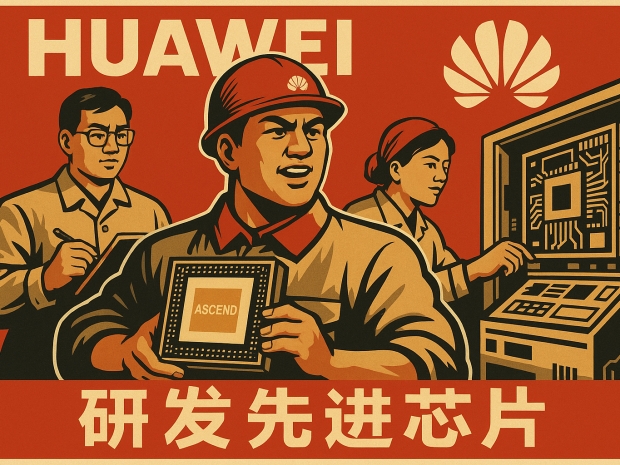According to the Wall Street Journal Huawei has begun approaching Chinese tech firms to test the new chip’s technical feasibility. The Shenzhen giant expects the first sample batches by late May. While the development is still early, it signals a fresh effort to counter Washington’s moves to choke China’s access to advanced chip-making kit.
Huawei hopes the Ascend 910D will outperform Nvidia’s H100 chip, the industry standard for AI training since 2022. Previous models in the Ascend line-up include the 910B and 910C.
The new chip reportedly uses packaging technologies to bundle more silicon dies together for greater grunt but remains less power efficient than the H100, sources said. Tests are still needed before it can be rolled out to customers.
Despite the US putting Huawei on its trade blacklist nearly six years ago, the company has continued to thrive. Last year, it unveiled the Mate 60 smartphone powered by a home-grown chip, launched during a visit to Beijing by then-Commerce Secretary Gina Raimondo, raising eyebrows in Washington.
Huawei’s latest efforts coincide with further crackdowns. The Biden administration recently added Nvidia’s H20 chip, the most advanced GPU allowed in China without a licence, to its restricted list. Nvidia warned it would take a $5.5 billion charge as a result.
The restrictions have created a window for Chinese rivals like Huawei and Cambricon Technologies. Analysts say Huawei could ship more than 800,000 Ascend 910B and 910C chips this year to customers including state-owned telcos and AI developers like ByteDance. Sources claim buyers are already boosting orders for the 910C after Nvidia’s H20 hit a wall.
Huawei’s biggest hurdle remains scale. Cut off from Taiwan Semiconductor Manufacturing, and with Semiconductor Manufacturing International hamstrung by equipment bans, Huawei has turned to bundling chips into vast computing systems.
Earlier this month, Huawei introduced the CloudMatrix 384, a system linking 384 Ascend 910C chips.
Analysts at SemiAnalysis wrote: “Having five times as many Ascends more than offsets each GPU being only one-third the performance of an Nvidia Blackwell.” They noted that “the deficiencies in power are relevant but not a limiting factor in China.”
The system may beat Nvidia’s 72-chip Blackwell racks under certain conditions, although it guzzles more power. Engineers warn that networking hundreds of processors together is no small feat, demanding robust systems to avoid crippling failures.

